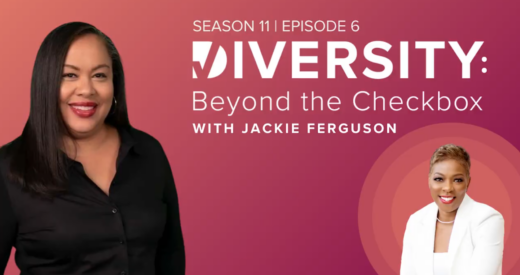April is World Autism Month, an annual celebration that seeks to raise awareness of Autism Spectrum Disorder and to amplify the personal stories and unique strengths of people with autism. It’s also Celebrate Diversity Month, a time to celebrate the unique cultures, perspectives, and experiences that make every person unique. In honor of both — and in an effort to encourage inclusion of all people and identities — we wanted to shine a brighter spotlight on two forms of what is often called “hidden diversity” in the workplace: neurodiversity and invisible illness.
Although there is no standardized definition of the term, neurodiversity generally refers to the full range of natural variations in human brain functions, especially around learning, thinking, or processing information. Autism is, perhaps, the most often cited example of neurodiversity, but the term also encompasses Asperger’s, dyslexia, ADHD/ADD, dysgraphia, dyscalculia, and more. Since many forms of neurodiversity go undiagnosed, there is no single statistic regarding the number of American workers who are neurodiverse, but experts indicate that these conditions may apply to 12-17% of people.
An invisible illness, on the other hand, is any medical condition that impacts a person’s life but is not immediately apparent to others. This includes chronic or recurrent conditions like sickle cell, diabetes, depression, arthritis, cancer, infertility, sleep disorders, Crohn’s disease, epilepsy, and more. About 10% of Americans have a non-visible medical condition that qualifies as an invisible disability (meaning that their illness significantly impacts their life), yet in the absence of visible evidence, these conditions are often belittled, ignored, or trivialized.
Indeed, there is no clear division between invisible illness and neurodiversity, and many times, these two categories will overlap with one another, especially when discussing mental health conditions like anxiety or depression. What neurodiversity and invisible illness have in common is that they are both non-visible and often kept secret for fear of stigmatization, misjudgment, or discrimination. To hear the personal side of this topic, we asked our partners, friends, and TDM colleagues these two questions:
- Do you share your condition openly with your employer? And if so, have you always felt comfortable disclosing?
- What advice would you give to employers to help them support you?
Here’s what they said:
Phil Anthony: “I don’t share my diagnosis with employers because in my mind, I shouldn’t make it a concern, since I haven’t let it affect my work responsibilities during my professional career. I do share the fact with friends and coworkers outside of work hours, because I see the Inspire commercials that show happy sleepers. Then, I explain and show people the implant in my chest that has internal wires connecting to my ribcage and tongue muscle and that, in my case, actually prevented me from sleeping soundly. I haven’t turned it on in years and need to have another surgery to take it out.”
Paul Silver: “I do not feel comfortable letting my employer know about my disability until after two weeks of being hired by a company. However, my resume does say that I have volunteered my time with Autism Support Groups. The advice I would give to employers is to know that people with disabilities will be an asset to your company and not a liability. I have worked for companies where I felt like an asset and I have worked for companies where I felt like a liability.”
Jackie Ferguson: “In my 25-year professional career, I have never shared that I have dyslexia with any employer because of a fear of being put in the disability box or being viewed as less than capable, when in fact, my dyslexia creates a way of non-linear thinking that is an asset. As advice to employers, I would say: speak openly about the advantages of dyslexic thinking in the workplace when it comes to problem-solving and innovation. Make inclusion education a part of your overall strategy for organizational success.”
Mike DeMauro: “I never shared it with my teachers because I wasn’t diagnosed until midway through my college education. I do share it when I’m comfortable or if there is some reason why I need to share about it. I say it in my job interviews and on the job because I feel that they need to know. I sometimes think that it could backfire on me and that they could take advantage of me with the information. I think that if the employers would understand me more, then we could work together to get the job done. There are also going to be good days and bad days, and I know that they might not understand. They might not understand why I might have a meltdown and go outside and cry. They might not understand when I am under a lot of pressure and can’t deal with it anymore at the time. They might not understand why I do things a certain way just as long as the job gets done correctly.”
Susie Silver: “I generally have shared my invisible illness (autoimmune disease) with my employer and team. I was very sick for many months before ever receiving a diagnosis and it was hard to explain what was going on and have the feeling that people truly believed that I was sick. The discomfort of disclosing my illness is that I usually look fine on the outside, and it is hard for many people to rationalize that. My advice to employers is to get to know your team. Ask what specific supports people need. Ask about the illness or condition in a genuine way to become more empathetic and compassionate.”
As you honor World Autism Month and Celebrate Diversity Month, remember that an inclusive organization culture respects and embraces all people, abilities, identities, and perspectives — including ones that are not visible.
A workplace environment that emphasizes neurodiversity as an asset to the team, shows empathy and awareness about invisible illness, and incorporates both inclusive language and best practices for disability inclusion can help employees feel safe and comfortable disclosing their conditions or diagnoses and requesting the accommodations they need.
To learn more about integrating disability inclusion into the fabric of your organization, consider enrolling in our online course, Disability Inclusion: Putting Untapped Talent to Work.






